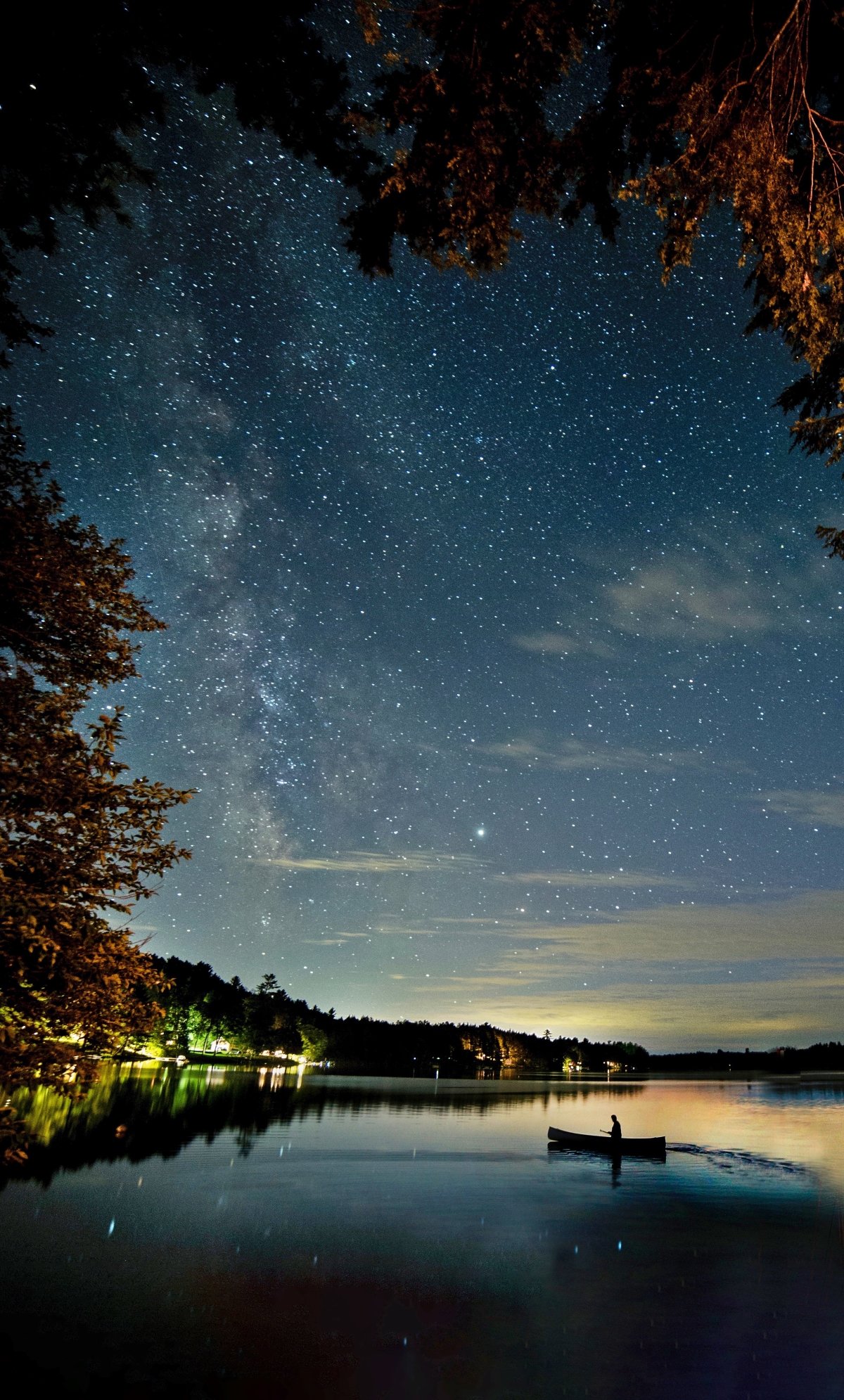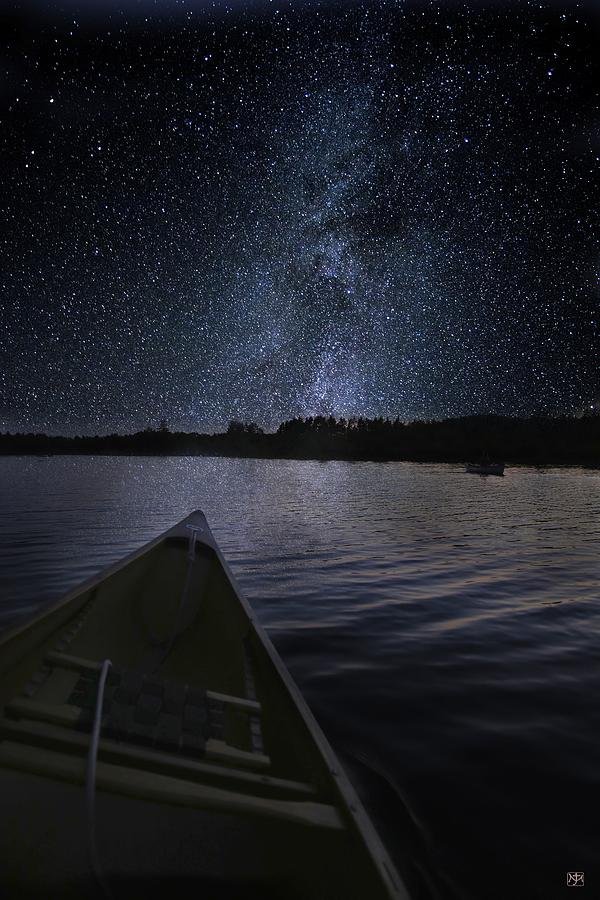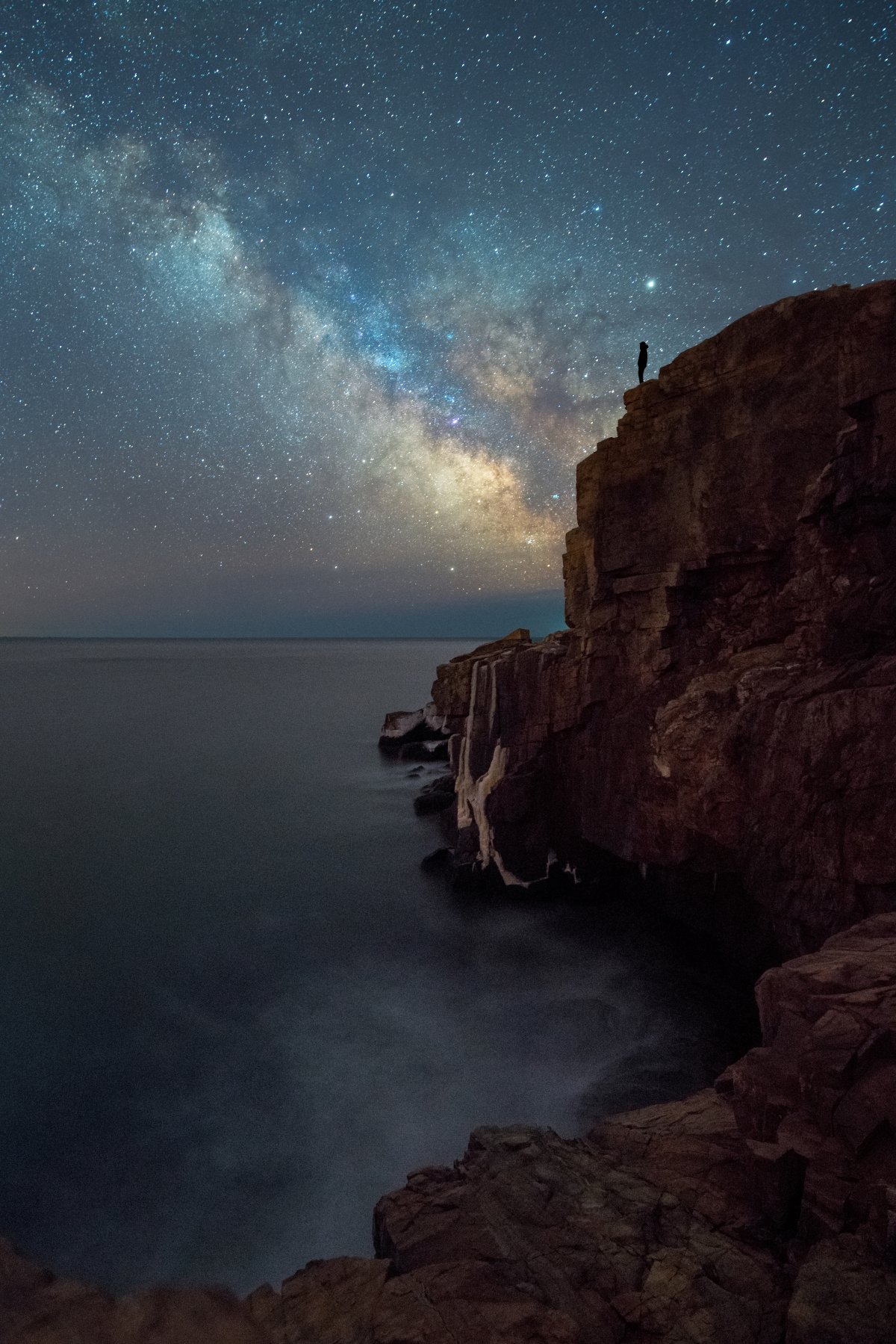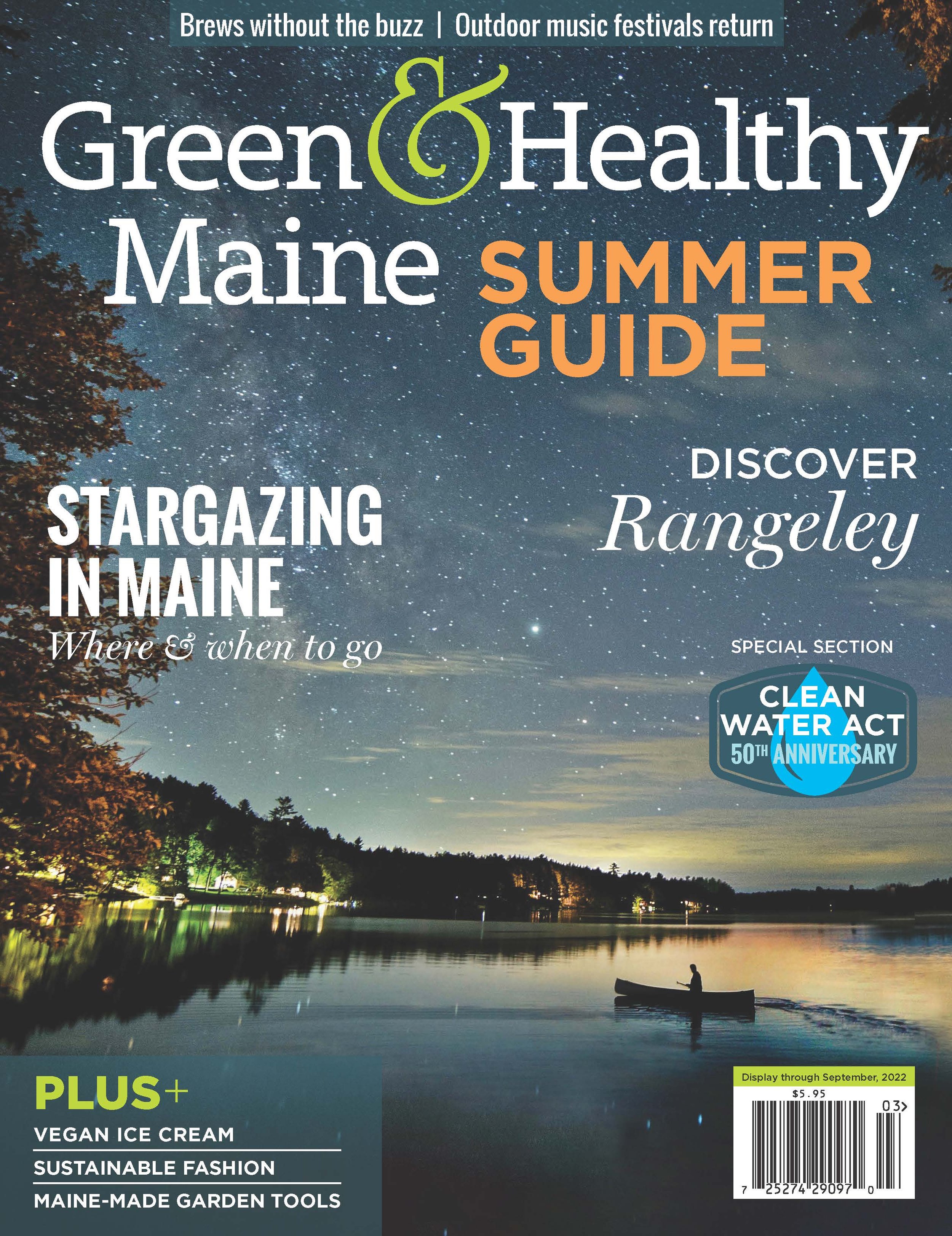Stargazing in Maine: Where & when to go
Night sky above Cadillac Mountain in Acadia National Park. NPS photo.
This article was last updated May 2024.
By June Donenfeld
IF YOU COULD GO BACK IN TIME a hundred years or more, on a clear night you would see the sky blanketed with the same glorious array of stars that Shakespeare or Sojourner Truth gazed upon. It is an inspiring and comforting thought. And a sobering one, too: because of the widespread light pollution that has developed over the past century, most of humanity cannot see the full splendor of a night sky that their ancestors did. But here in Maine, the largest of the New England states, the abundant tree coverage and low population mean that we are blessed with some of the country’s best stargazing opportunities, including a site that was certified in 2020 as an official International Dark Sky Sanctuary, one of just 13 worldwide and the only one east of the Mississippi. Let’s get star-ted.
Stargazing basics
When should I go? Plan to stargaze on a clear or near-clear night at least an hour or two after sunset, once the light has completely disappeared. And as a bright moon can interfere with seeing the full array of other celestial bodies, go when there’s a new moon, before moonrise or after moonset. You can check specifics at timeanddate.com/moon. For a calendar of 2023 skywatching at its most spectacular, including meteor showers, lunar eclipses and supermoons, this celestial calendar for a complete rundown.
What should I take? To avoid any missteps in the dark, take a flashlight or head lamp, ideally one with a red-light function, as a white light can impede night vision. Also pack a blanket, towel or chair so you can gaze in comfort—and forestall possible vertigo from gazing upward. If you want to identify constellations or planets, take a seasonally appropriate star map with you or download a smartphone stargazing app, like ones recommended at space.com/best-stargazing-apps. And take an extra sweater or blanket; you won’t be moving around much, and chilly night air could put a damper on the experience.
Paddling under the Milky Way on Oak Pond in Skowhegan, Maine. Photos: John Meader, Co-founder of Dark Sky Maine
Stargazing in the great outdoors
Best spots for DIY stargazing
The Katahdin Woods and Waters National Monument in inland Maine, on the eastern border of Baxter State Park in northern Penobscot County, was certified in 2020 by the International Dark-Sky Association as an International Dark Sky Sanctuary, one of just 20 worldwide. Nearby is the 75,000-acre Appalachian Mountain Club (AMC) Maine Woods, an International Dark Sky Park, the first of its kind in New England. Timber companies may own much of the 14,000 square-kilometer North Maine Woods, but there are also large swathes of surrounding public and private land that enjoy conservation protection, including the nine private land parcels managed by the Appalachian Mountain Club, a leader in land conservation since the late 18th century.
For coastal stargazing, Acadia National Park and Mount Desert Island have some stunning sites, including Seawall, Jordan Pond, Ocean Path, Sand Beach and Schoodic Head on Schoodic Peninsula. If you’re aiming to see the Milky Way, the best time to go is July and August, but if you want to drive up the Cadillac Summit Road anytime during the peak season (in 2024: Wednesday, May 22 through Sunday, October 27), you’ll need reservations; learn more at nps.gov. Travel another two and a half hours up the coast to the northeasternmost corner of the state, and you’ll reach another picture-perfect place, the almost 900-acre Cobscook Bay State Park, part of the Moosehorn National Wildlife Refuge.
Other areas that make for unforgettable DIY stargazing experiences include Aroostook County, where you might just be lucky enough to see the Northern Lights, if the timing’s right, or some of the many Midcoast trails maintained by the Coastal Rivers Conservation Trust.
Katahdin Woods & Waters National Monument was recently designated as one of less than 20 International Dark Sky Sanctuaries in the world (as of 2022). Photo: John Meader.
It’s (star) party time!
If you want a little more structure to your stargazing, try one of these special events:
Star gazing from Otter Cliff in Acadia National Park.
Medomak Family Camp in Washington in Knox County holds an annual summer Astronomy Week whose highlights include sky tours, solar system walks, and both solar and conventional telescopes. 2024 dates: July 24-30. (Website)
The Downeast Amateur Astronomers, an astronomy club in Washington County, hosts the Maine State Star Party at Cobscook Bay State Park every summer. Check their Facebook page for updates on the 2024 event. (Website)
The Acadia Night Sky Festival happens annually at the end of September in Bar Harbor, where there will be an array of choices to suit all ages and interests, including talks by internationally known experts, workshops, and fun, hands-on experiences. Check their website for updates on the 2024 event. (Website)
Stars Over Katahdin is also an annual autumn night-sky celebration, but of the breathtaking firmament in the Katahdin region. 2024 marks the twelfth year of this event organized by Friends of Katahdin Woods and Waters. For individuals and families, novices and experts, the program will include campfire chats about dark skies and guided observation of the celestial objects above. Check the website for updates on the 2024 event. (Website)
Founded in 2004, the Southern Maine Astronomers Club holds monthly star parties at their Brunswick headquarters through November. All events are free and open to the public, including monthly Zooms on astronomy topics with experts in the field. The club is also active in efforts to preserve dark skies, working with towns and planning boards to establish dark sky lighting standards. (Website)
Maine observatories and planetariums
Can’t make it to any of these happenings? Here are other places, large and small, to learn about and enjoy Maine’s night wonders:
Observatories
The Brower Observatory in Whitefield is affiliated with the Central Maine Astronomical Society, a well-established group of astronomy aficionados, as is the Galaxy Quest Observatory in Lincolnville on the central coast. In southern Maine, the all-volunteer Astronomical Society of Northern New England operates the Starfield Observatory in Kennebunk, and the Blueberry Pond Observatory in Pownal, inland from Freeport, offers guided tours, webinars and astronomy projects for individuals and groups alike.
Planetariums
In Portland, the University of Southern Maine is home to the Southworth Planetarium, which presents both regularly scheduled and 30+ on-demand, full-dome shows, from the history of astronomy to the birth of the solar system. Each on-demand event features the show and a live night sky and Q&A period. And the University of Maine Orono has the new Versant Power Astronomy Center and Maynard Jordan Planetarium, whose astronomy shows also include lectures by experts in their fields.
Check out a Family Science Backpack
Portland Public Library has Family Science backpacks available to check out, with five different themes including Star Gazing, Birding, Bugs & Butterflies, Hiking and Rock Hounding. The backpacks come packed with supplies, activities and tools to help children get interested in science in nature! Available for one week, see the staff at the Children’s Desk in the Downtown Library or Riverton Branch for more information.
What’s inside the Star Gazing Backpack: Binoculars, red beam flashlight, folding star chart, moon map, space blanket, magnifying glass, clipboard case.








Check out anything from musical instruments to microscopes from Maine’s Libraries of Things